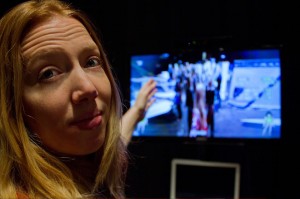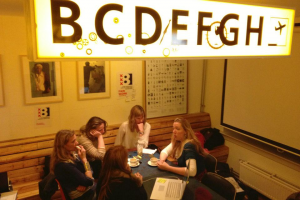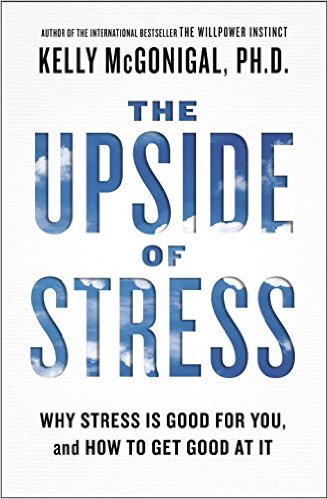This is my summary/translation of the article Abwehrreaktionen auf Gesundheitsappelle: Forschungsstand und Praxisempfehlungen by Hastall, 2012.
Against threatening or disturbing messages we have defensive processes, in order not to get thrown into a (unhealthy) state of frenzy every time we encounter one. These defensive processes are understood as motivated reactions, responses to health-appeals that take up resources when three criteria are met (Hastall, 2012).
- The response follows directly after contact with the message
- The response is based on defensive measures; it is meant to reflect an anticipated threat (e.g. threats to feelings of self-worth or emotional well-being)
- The response is aimed directly or indirectly at avoiding the message or attacking the content of the message
We can distinguish four different groups of defensive responses that might inhibit effective health marketing/communication:
- Avoiding or minimising contact with threatening messages
- General psychological ego-defence mechanisms
- Attacking the content of the message or the messenger
- Increased health-damaging behaviour
 Modern man has developed advanced avoidance strategies for online marketing messages of any kind to such a degree that we completely miss the advertisements on a website (a concept known as banner-blindness) and we install ad-blocking software, spam filters and the like to assist us in avoiding unsolicited content. Modern psychoanalysis and clinical psychology defines defence mechanismsas unconscious processes meant to protect an individual from fear and recognition of internal or external burdens and threats. A defence mechanism does this by regulating the response of the individual to emotional conflict and external burdens (Wittchen/Hoyer, 2011). Over 40 such processes have been discerned and are commonly and continually applied by individuals in their daily lives (Cramer, 2008). The mechanisms of denial, repression and rationalisation seem especially important in the health domain (Hastall, 2012). For example; illusory superiority bias describes the constant overestimation of our positive aspects and the subsequent underestimation of our negative aspects. Combining this bias with unrealistic optimism and false consensus bias leaves many well intended health messages unattended to, because they are deemed ‘not relevant’ to us.
Modern man has developed advanced avoidance strategies for online marketing messages of any kind to such a degree that we completely miss the advertisements on a website (a concept known as banner-blindness) and we install ad-blocking software, spam filters and the like to assist us in avoiding unsolicited content. Modern psychoanalysis and clinical psychology defines defence mechanismsas unconscious processes meant to protect an individual from fear and recognition of internal or external burdens and threats. A defence mechanism does this by regulating the response of the individual to emotional conflict and external burdens (Wittchen/Hoyer, 2011). Over 40 such processes have been discerned and are commonly and continually applied by individuals in their daily lives (Cramer, 2008). The mechanisms of denial, repression and rationalisation seem especially important in the health domain (Hastall, 2012). For example; illusory superiority bias describes the constant overestimation of our positive aspects and the subsequent underestimation of our negative aspects. Combining this bias with unrealistic optimism and false consensus bias leaves many well intended health messages unattended to, because they are deemed ‘not relevant’ to us.
|
Table: Health marketing defence mechanisms (Hastall, 2012)
|
| Avoiding or minimising contact with threatening messages |
| Selective message avoidance |
Complete avoidance of messages or turning away the attention after brief/short and unconscious contact |
| Banner blindness |
Selective advertisement avoidance specific to websites. While visually scanning the site, the anticipated advertisements are visually faded out |
| Technical defence |
Using technical solutions to avoid contact with unwanted messages, such as AdBlock or a spam filter |
| Legal defence |
Prohibiting advertisements or joining a revocation list e.g. Robinson-list |
| General psychological ego-defence mechanisms |
| Denial |
Not considering or denial of aspects in reality that threaten ones’ existence, such as health risks |
| Repression |
Displacing threatening aspects of reality in ones’ subconscious |
| Rationalisation |
Inventing seemingly reasonable explanations to justify threatening thoughts, feelings or behaviours |
| Illusory superiority effect |
Overestimating ones’ positive qualities in comparison to others, while simultaneously underestimating ones’ negative qualities |
| Unrealistic optimism |
Believing that one will be affected less by negative occurrences and more by positive occurrences than other people |
| False consensus effect |
Overestimating the proportion of people that share ones’ viewpoint on a certain topic |
| Attacking the content of the message or the messenger |
| Selective interpretation |
Reinterpreting the content of the message in such a way that it harmonises with ones’ views and beliefs |
| Counter arguments |
Generating arguments that counter the propositions of a message and the recommendations made e.g. by looking for information stating the opposite |
| Source devaluation |
Devaluating the source of a message e.g. by insinuations of incompetence or unreasonable intentions |
| Aggression |
Verbal or physical attacks on the messenger, the message or the medium carrying the message e.g. tearing down health related placards |
| Advantageous social comparison |
Comparing oneself to person who are worse off or are behaving worse than you in order to feel better about oneself and to diminish the necessity of a behaviour or attitude change |
| Social validation |
Looking for persons with similar attitudes and behaviours and emphasizing the high number of corresponding people |
| Heightened attractiveness of critical aspects |
Health damaging behaviours are seen as more attractive after contact with the message than before contact with the message |
| Increased health-damaging behaviour |
| Boomerang effect |
Message provokes the opposite of the intended goal e.g. smoking more after contact with a anti-smoking message |
| Taking psycho-active substances |
Taking alcohol, nicotine, drugs or medication after contact with the message in order to pacify oneself or shift thoughts |
Should a possibly threatening message get through the first line of defence mechanisms and manage to get itself consciously considered, attack strategies might come into play. Findings that confirm this course of thought and action are aggregated from research into cognitive dissonance (Festinger, 1957), psychological reactance (Brehm, 1966; Dillard & Shen, 2005) and resistance (Jacks & Cameron, 2003).
Strategies to lessen the resistance
There are two neurological systems working in parallel: BIS and BAS (e.g. Carver et al. 2000; Gray, 1982). The Behavioural Inhibition System; looking for potential threats and possible dealing with them through various defence mechanisms – and the Behavioural Activation System; looking for cues for potential positive experiences. BIS concerns itself with (our protection from) negative emotions. Any message that intends to trigger certain health behaviours would do well to address both systems, simultaneously trying to minimize BIS while maximizing BAS (Knowles & Linn, 2004) Minimizing the threat– All health related sciences tend to take the perspective of the ‘Natural model’ of health vs. disease and mainly focus their efforts on the physical. However, a health related message can be perceived as threatening on more levels than just as it relates to our physical manifestation. All the possible levels of threat must be discerned if they are to be minimized.
| Table: Threats by health marketing (Hastall, 2012) |
| Target of threat |
Anticipated health relevant conditions |
| Reading messages on health risks |
Anxiety of health risks |
Execution of the recommended protective behaviour |
| Body |
Physical discomfort when reading the message |
Pain, reduced capabilities, death |
Physical strain; side effects |
| Cognition |
Worry about the likelihood of the disease |
Worry about the likelihood of healing |
Worry about the effectiveness of the protective behaviour |
| Emotion |
Fear or dread at reading the message |
Sorrow about those concerned; fear |
Feelings of shame or uncertainty |
| Self-worth |
“Manipulation” by marketing messages |
Dependent on outside help; passive layman |
Self-perception as vulnerable or overanxious |
| Social status |
Non-compatible role expectations |
Loneliness; Blaming others as accomplices |
Being ridiculed or rejected by others |
| Resources |
Time or expenses looking for more information |
Time or expenses for necessary treatment |
Time or expenses for protective behaviour |
References
Brehm, J. W. (1966): A Theory of Psychological Reactance, New York: Academic Press. Carver, C. S., Sutton, S. K., & Scheier, M. F. (2000). Action, emotion, and personality: Emerging conceptual integration. Personality and social psychology bulletin, 26(6), 741-751.
Cramer, P. (2008): Seven Pillars of Defense Mechanism Theory, in: Social and Personality Psychology Compass, 2, 5, S. 1963-1981
Dillard, J. P./Shen, L. (2005): On the Nature of Reactance and Its Role in Persuasive Health Communication, in: Communication Monographs, 72, 2, S. 144-168.
Festinger, L. (1957): A Theory of Cognitive Dissonance, Stanford: Stanford University Press.
Gray, J. A. (1982). The neuropsychology of anxiety: An enquiry into the functions of the septo-hippocampal system. New York: Oxford University Press.
Hastall, M. R. (2012). Abwehrreaktionen auf Gesundheits-appelle: Forschungsstand und Praxisempfehlungen. In S. Hoffmann, U. Schwarz & R. Mai (Eds.), Angewandtes Gesundheitsmarketing (pp. 281-296): Springer Fachmedien Wiesbaden. Jacks, J. Z.
Cameron, K. A. (2003): Strategies for Resisting Persuasion, in: Basic & Applied Social Psychology, 25, 2, S. 145-161 Knowles, E. S.
Linn, J. A. (2004): Approach-Avoidance Model of Persuasion: Alpha and Omega Strategies for Change, in: Knowles, E. S./Linn, J. A. (Hrsg.): Resistance and Persuasion, Mahwah: Psychology Press, S. 117-148.
Wittchen, H.-U./Hoyer, J. (2011): Klinische Psychologie & Psychotherapie, Berlin: Springer.
 Still fuzziness continued in the fields of psychology and education around terms such as ‘strategic knowledge’. Great discrepancy existed in the definition of strategic knowledge, most apparent in the research area of problem solving, even though a debate on this issue had been in the literature for over a decade at that time.
Still fuzziness continued in the fields of psychology and education around terms such as ‘strategic knowledge’. Great discrepancy existed in the definition of strategic knowledge, most apparent in the research area of problem solving, even though a debate on this issue had been in the literature for over a decade at that time.





